-
 Bitcoin
Bitcoin $107,341.7259
0.15% -
 Ethereum
Ethereum $2,438.6204
0.70% -
 Tether USDt
Tether USDt $1.0003
-0.02% -
 XRP
XRP $2.1866
1.94% -
 BNB
BNB $649.0952
0.36% -
 Solana
Solana $150.9602
5.63% -
 USDC
USDC $0.9999
0.00% -
 TRON
TRON $0.2742
0.40% -
 Dogecoin
Dogecoin $0.1645
1.93% -
 Cardano
Cardano $0.5669
1.18% -
 Hyperliquid
Hyperliquid $37.8286
4.19% -
 Bitcoin Cash
Bitcoin Cash $491.4669
-2.74% -
 Sui
Sui $2.8150
3.06% -
 Chainlink
Chainlink $13.4184
2.91% -
 UNUS SED LEO
UNUS SED LEO $9.0809
0.27% -
 Avalanche
Avalanche $18.0295
2.60% -
 Stellar
Stellar $0.2396
1.19% -
 Toncoin
Toncoin $2.8587
0.13% -
 Shiba Inu
Shiba Inu $0.0...01160
2.59% -
 Litecoin
Litecoin $86.4192
1.45% -
 Hedera
Hedera $0.1486
1.19% -
 Monero
Monero $308.4324
0.87% -
 Polkadot
Polkadot $3.4202
1.43% -
 Bitget Token
Bitget Token $4.6436
-0.34% -
 Dai
Dai $0.9998
-0.02% -
 Ethena USDe
Ethena USDe $1.0002
0.00% -
 Uniswap
Uniswap $7.1527
3.29% -
 Pi
Pi $0.5357
-8.45% -
 Pepe
Pepe $0.0...09588
4.61% -
 Aave
Aave $259.9759
0.81%
What is Interoperability?
Cryptocurrency interoperability, enabling seamless communication between different blockchains, faces challenges like varying consensus mechanisms and scalability issues. Solutions like bridges, sidechains, and layer-2 scaling are being developed to overcome these hurdles, creating a more unified and efficient ecosystem.
Mar 11, 2025 at 03:55 pm
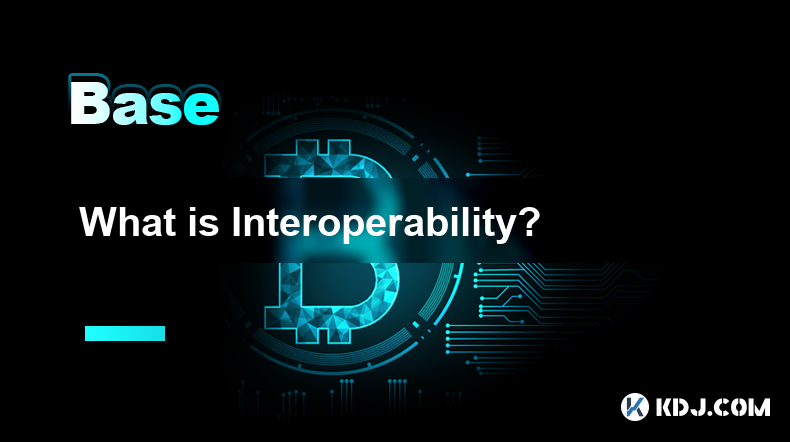
Key Points:
- Interoperability in the cryptocurrency context refers to the ability of different blockchain networks to seamlessly communicate and exchange information and value.
- Several challenges hinder interoperability, including differing consensus mechanisms, scalability issues, and security concerns.
- Various solutions are being developed to achieve interoperability, including bridges, sidechains, and layer-2 scaling solutions.
- Understanding interoperability is crucial for the future of a more unified and efficient cryptocurrency ecosystem.
What is Interoperability?
Interoperability, in the cryptocurrency world, signifies the capacity of distinct blockchain networks to interact and exchange data or assets smoothly. Imagine a world where you could effortlessly transfer Bitcoin to an Ethereum-based decentralized application (dApp) without needing to rely on centralized intermediaries. This seamless transfer of value and information is the essence of interoperability. It's a crucial element in fostering a more interconnected and collaborative cryptocurrency ecosystem.
Challenges to Interoperability
Achieving true interoperability across diverse blockchain networks presents significant hurdles. One major obstacle is the variation in consensus mechanisms. Different blockchains employ different methods to validate transactions (Proof-of-Work, Proof-of-Stake, etc.), making direct communication challenging. Scalability is another significant concern. Many blockchains struggle to handle a high volume of transactions, limiting their capacity to integrate with other networks efficiently. Security remains paramount; any interoperability solution must prioritize the security of all participating networks to prevent vulnerabilities.
Solutions for Interoperability
Developers are actively exploring numerous solutions to overcome the obstacles to interoperability. One prominent approach is the use of bridges. Bridges act as intermediaries, facilitating the transfer of assets between different blockchains. They essentially "wrap" tokens from one network to make them compatible with another. However, bridges often introduce security risks and may lack the speed and efficiency of a truly native solution.
Another solution is the utilization of sidechains. Sidechains are separate blockchains that run parallel to the main blockchain, offering increased scalability and faster transaction speeds. Assets can be transferred between the main chain and the sidechain, improving interoperability without compromising the security of the main network. This method, however, still requires a level of trust in the sidechain's security and governance.
Layer-2 scaling solutions are also playing a critical role in enhancing interoperability. These solutions operate on top of existing blockchains, improving transaction throughput and reducing fees. By leveraging layer-2 protocols, different blockchains can interact more efficiently, even if their underlying technologies differ significantly. This offers a potential pathway towards better scalability while maintaining the security of the base layer.
Different Types of Interoperability
Understanding the nuances of interoperability requires recognizing its different forms. One key distinction lies between "data interoperability" and "value interoperability." Data interoperability focuses on the exchange of information between blockchains, allowing dApps on different networks to access and utilize data from each other. Value interoperability, on the other hand, focuses on the seamless transfer of digital assets, such as cryptocurrencies and NFTs, between distinct blockchains. Both aspects are crucial for a truly interconnected ecosystem.
Another important distinction is between "loose" and "tight" interoperability. Loose interoperability involves using intermediaries or bridges to facilitate communication between blockchains, while tight interoperability implies a more direct and seamless interaction, potentially through shared infrastructure or protocols. Each approach offers its own trade-offs regarding security, speed, and complexity.
The Future of Interoperability
The pursuit of seamless interoperability is a continuous journey. The evolution of blockchain technology and the ongoing development of innovative solutions will shape the future of this critical aspect of the cryptocurrency landscape. As the field matures, we can expect to see more sophisticated and secure methods for bridging the gaps between different networks, ultimately leading to a more unified and efficient digital asset ecosystem. This will involve overcoming numerous technological challenges, as well as fostering collaboration among developers and stakeholders across the various blockchain communities.
Frequently Asked Questions (FAQs)
Q: What are the benefits of interoperability in the cryptocurrency space?
A: Interoperability offers numerous benefits, including increased efficiency in transferring assets, improved accessibility for users, the potential for the creation of more sophisticated decentralized applications (dApps), and a more unified and collaborative cryptocurrency ecosystem.
Q: What are some examples of projects working on interoperability solutions?
A: Numerous projects are working on interoperability solutions, including Cosmos, Polkadot, and Chainlink, each utilizing different approaches to bridge the gap between various blockchain networks. These projects represent a range of technologies and approaches to the problem of interoperability.
Q: Is interoperability a solved problem?
A: No, interoperability is not a solved problem. While progress is being made, significant challenges remain, including security concerns, scalability limitations, and the need for standardization. The development of robust and widely adopted interoperability solutions is an ongoing process.
Q: What are the risks associated with interoperability solutions?
A: The main risks include security vulnerabilities, especially in bridge solutions where assets are locked and transferred between networks. The complexity of interoperability solutions can also lead to unforeseen issues and potential points of failure. Careful consideration of security protocols and thorough audits are crucial.
Q: How will interoperability impact the future of DeFi?
A: Interoperability will significantly impact the future of decentralized finance (DeFi) by allowing for the seamless transfer of assets across different DeFi platforms and protocols. This will unlock greater liquidity, enable more complex financial instruments, and potentially lead to the creation of more sophisticated and interconnected DeFi applications.
Q: What is the difference between a bridge and a sidechain in the context of interoperability?
A: Bridges act as intermediaries, facilitating asset transfers between different blockchains. Sidechains are separate blockchains that run parallel to the main chain, offering improved scalability and faster transaction speeds. While both improve interoperability, bridges are generally less efficient and may introduce more security risks than well-designed sidechains.
Disclaimer:info@kdj.com
The information provided is not trading advice. kdj.com does not assume any responsibility for any investments made based on the information provided in this article. Cryptocurrencies are highly volatile and it is highly recommended that you invest with caution after thorough research!
If you believe that the content used on this website infringes your copyright, please contact us immediately (info@kdj.com) and we will delete it promptly.
- Kitten Craze Online: Hunting for the Purr-fect Coin Purse
- 2025-06-29 10:30:12
- Pudgy Penguins Soar to 3-Month High Amidst PENGU ETF Buzz!
- 2025-06-29 10:30:12
- AI Agents, Token Role, and Capitalization: Navigating the Web3 Frontier
- 2025-06-29 10:50:11
- Avalanche Price Forecast: Grayscale Boost Signals Potential Rally to $50?
- 2025-06-29 10:50:11
- Khazan's Getting a Facelift: Balance Changes and Freebies Galore!
- 2025-06-29 11:10:12
- Wall Street's Crypto Rival Battle: Saylor vs. Chanos and the Meme Coin Mania
- 2025-06-29 11:10:12
Related knowledge
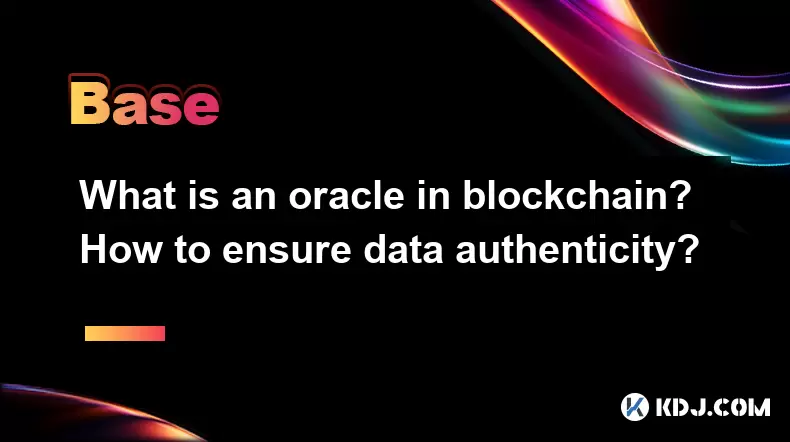
What is an oracle in blockchain? How to ensure data authenticity?
Jun 19,2025 at 08:49pm
Understanding the Role of an Oracle in BlockchainIn the context of blockchain technology, an oracle serves as a bridge between the blockchain and external data sources. While blockchains are inherently secure and decentralized, they cannot access real-world information on their own. Oracles enable smart contracts to interact with off-chain data such as ...
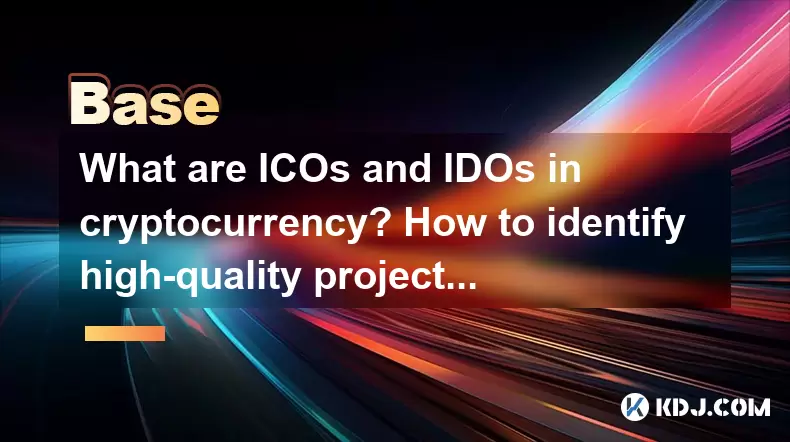
What are ICOs and IDOs in cryptocurrency? How to identify high-quality projects?
Jun 22,2025 at 11:49am
Understanding ICOs in CryptocurrencyInitial Coin Offerings (ICOs) are fundraising mechanisms used by cryptocurrency startups to raise capital for their projects. In an ICO, a company creates and sells its own tokens to investors in exchange for established cryptocurrencies like Bitcoin or Ethereum. The process typically involves the release of a whitepa...
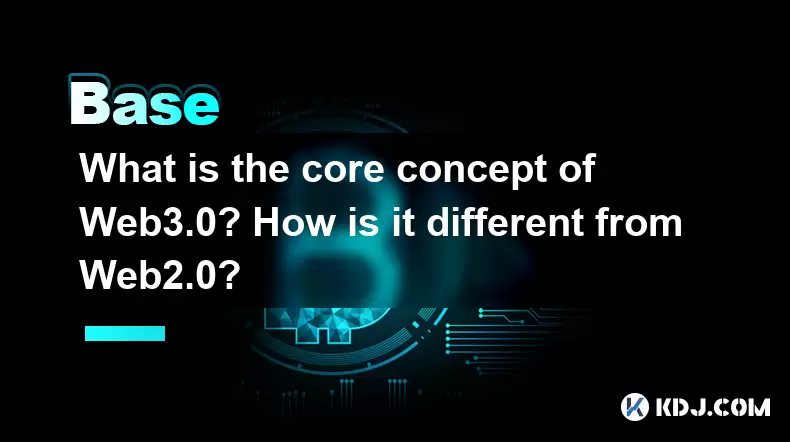
What is the core concept of Web3.0? How is it different from Web2.0?
Jun 21,2025 at 05:56pm
Decentralization as the Foundation of Web3.0The core concept of Web3.0 revolves around decentralization, which fundamentally challenges the centralized architecture of Web2.0. In Web3.0, control and ownership are distributed across a network rather than being held by a central authority or corporation. This is achieved primarily through blockchain techn...
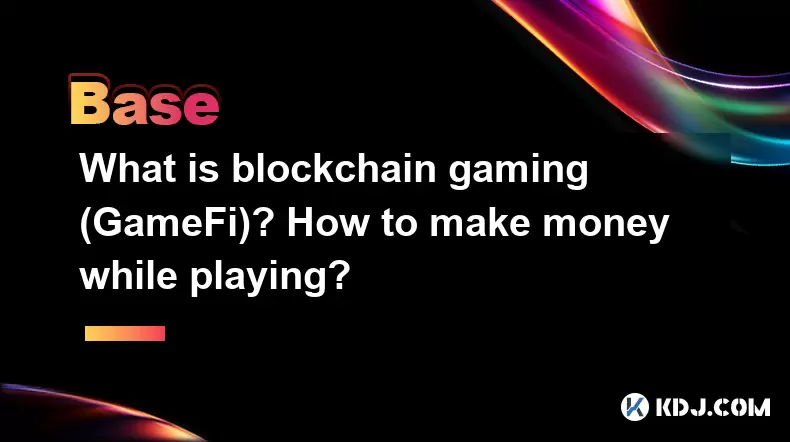
What is blockchain gaming (GameFi)? How to make money while playing?
Jun 20,2025 at 07:56am
Understanding Blockchain Gaming (GameFi)Blockchain gaming, often referred to as GameFi, is a fusion of blockchain technology and video games. It enables players to own in-game assets through non-fungible tokens (NFTs) and earn rewards via cryptocurrencies or token-based systems. Unlike traditional games where items are controlled by centralized develope...
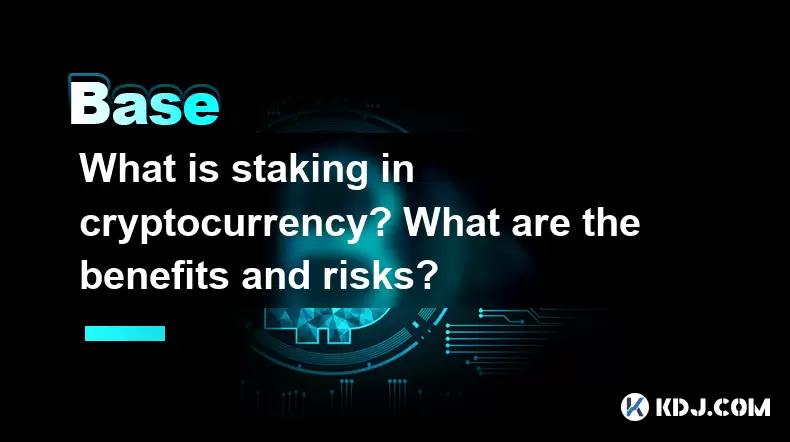
What is staking in cryptocurrency? What are the benefits and risks?
Jun 22,2025 at 10:01am
Understanding the Concept of Staking in CryptocurrencyStaking in cryptocurrency refers to the process of actively participating in transaction validation on a blockchain network that uses a Proof-of-Stake (PoS) consensus mechanism. Instead of miners competing to solve complex mathematical puzzles as in Proof-of-Work systems like Bitcoin, PoS blockchains...
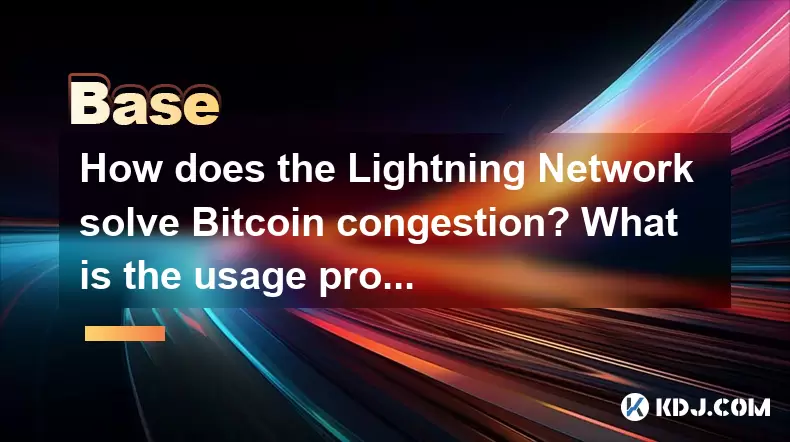
How does the Lightning Network solve Bitcoin congestion? What is the usage process?
Jun 23,2025 at 06:21pm
Understanding Bitcoin Network CongestionBitcoin, as a decentralized digital currency, operates on a blockchain that records every transaction in a public ledger. Each block has a limited size, typically 1 megabyte, which allows for only a certain number of transactions per second (TPS). When the number of transactions increases, the network becomes cong...

What is an oracle in blockchain? How to ensure data authenticity?
Jun 19,2025 at 08:49pm
Understanding the Role of an Oracle in BlockchainIn the context of blockchain technology, an oracle serves as a bridge between the blockchain and external data sources. While blockchains are inherently secure and decentralized, they cannot access real-world information on their own. Oracles enable smart contracts to interact with off-chain data such as ...

What are ICOs and IDOs in cryptocurrency? How to identify high-quality projects?
Jun 22,2025 at 11:49am
Understanding ICOs in CryptocurrencyInitial Coin Offerings (ICOs) are fundraising mechanisms used by cryptocurrency startups to raise capital for their projects. In an ICO, a company creates and sells its own tokens to investors in exchange for established cryptocurrencies like Bitcoin or Ethereum. The process typically involves the release of a whitepa...

What is the core concept of Web3.0? How is it different from Web2.0?
Jun 21,2025 at 05:56pm
Decentralization as the Foundation of Web3.0The core concept of Web3.0 revolves around decentralization, which fundamentally challenges the centralized architecture of Web2.0. In Web3.0, control and ownership are distributed across a network rather than being held by a central authority or corporation. This is achieved primarily through blockchain techn...

What is blockchain gaming (GameFi)? How to make money while playing?
Jun 20,2025 at 07:56am
Understanding Blockchain Gaming (GameFi)Blockchain gaming, often referred to as GameFi, is a fusion of blockchain technology and video games. It enables players to own in-game assets through non-fungible tokens (NFTs) and earn rewards via cryptocurrencies or token-based systems. Unlike traditional games where items are controlled by centralized develope...

What is staking in cryptocurrency? What are the benefits and risks?
Jun 22,2025 at 10:01am
Understanding the Concept of Staking in CryptocurrencyStaking in cryptocurrency refers to the process of actively participating in transaction validation on a blockchain network that uses a Proof-of-Stake (PoS) consensus mechanism. Instead of miners competing to solve complex mathematical puzzles as in Proof-of-Work systems like Bitcoin, PoS blockchains...

How does the Lightning Network solve Bitcoin congestion? What is the usage process?
Jun 23,2025 at 06:21pm
Understanding Bitcoin Network CongestionBitcoin, as a decentralized digital currency, operates on a blockchain that records every transaction in a public ledger. Each block has a limited size, typically 1 megabyte, which allows for only a certain number of transactions per second (TPS). When the number of transactions increases, the network becomes cong...
See all articles

























































































